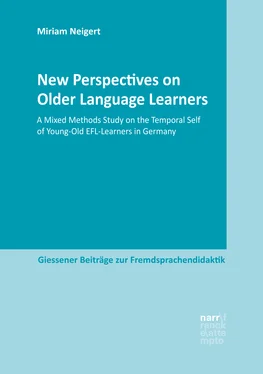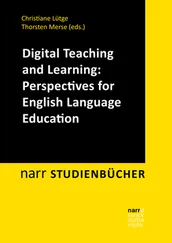3.3.2 Self-Determination Theory (SDT)
Going back to the concept of ought selves, they can become ideal selves when they become internalized by individuals because of group or role conformity (Ryan & Irie 2014: 112f.; Boyatzis & Akrivou 2006: 628). This process forms the basis of the self-determination theory formulated by Deci and Ryan (1985). Dörnyei and Ushioda (2011: 25) summarize it by writing that “SDT’s central notion of a continuum of self-determination focuses attention on how motivation for externally defined goals and behaviours may be socialised and gradually internalised” (see also: Deci & Ryan, 1985: 131f.; Ushioda 2014).1 The notion of a continuum, however, makes it difficult to draw a boundary between ideal and ought selves in situ : Is my ideal self for a particular domain in my life truly what I want for myself? Was it me who generated it, or have I internalized what others (through expectations, pressure or force from peer group, my parents, and society in general) see as an ideal self for me, i.e. the ought self?
Boyatzis and Akrivou (2006: 628) do not regard it as a problem if an ought self is intentionally or consciously internalized into one’s ideal self system. But problems do arise if there is no congruence between the two:
To the extent this [the ought self] becomes intentionally integrated into a person’s ideal self, there appears to be no conflict among the various selves. But if they are somewhat different and a person works toward the ought self, at some point in the future, they will awake and feel betrayed, frustrated, and even angry at the time and energy they wasted in pursuit of dreams and expectations that they were never passionate about.
If we connect this to the discussion about self-concept formation in section 3.2.3, it is debatable whether the problem of incongruent ought and ideal selves affects the young-old as much as it affects younger age groups. As stated in section 3.2.3, high school students were more influenced in their self-concept formation by the appraisals of (adult) socializers than young-old learners, who are not dependent on socializers to that extent anymore (see also: Kormos & Csizér 2008: 347). Are the sources for ought selves for the young-old different to those of younger age groups? And do the young-old internalize external projections at all?
3.3.3 Self-Discrepancy Theory
The interplay of ideal and ought selves described in self-determination theory – the degree of internalisation on a continuum of external control and internal regulation – has also been the focus of the self-discrepancy theory introduced by Higgins (1987), however, with the inclusion of the actual self.1 Higgins (1987: 320f.) refers to ideal, ought, and actual self as domains of the self . He adds to this dimension a second cognitive dimension: standpoints on the self (own and other).
| Standpoints on the Self |
Domains on the Self |
| Actual |
Ideal |
Ought |
| Own |
actual/own |
ideal/own |
ought/own |
| Other |
actual/other |
ideal/other |
ought/other |
|
Self-Concept |
Self-Guides |
Table 3.1
Self-State Representations (after Higgins 1987)
The domains of actual, ideal, and ought combined with the standpoints of own/other create six different types of “self-state representations” (p. 321; see table 3.1): actual/own, actual/other, ideal/own, ideal/other, ought/own, and ought/other (see also Taylor 2011). He points out that both types, actual/other and particularly actual/own, constitute a person’s self-concept, whereas the other four types (ideal/own, ideal/other, ought/own, and ought/other) can be regarded as self-guides . Similarly, Dörnyei – as a foundation for his L2 Motivational Self-System (L2MSS) – has described ideal and ought-to L2 selves as future self-guides in order to highlight this particular temporal facet of the construct.
As with possible selves, it is also important to note that self-guides – i.e. the existence or degree of manifestation of ought and ideal self-guides in a person’s self-system – differ between individuals: “[P]eople differ to which self-guide they are especially motivated to meet” (Higgins 1987: 321). In other words, one person has more ought self-guides than another person, who only or mainly has ideal self-guides. Higgins’ self-discrepancy theory is essentially concerned with the discrepancy of self-concept and self-guides and the emotional problems this discrepancy may have on the individual: “[W]e are motivated to reach a condition where our self-concept matches our personally relevant self-guides” (p. 321). Higgins (1987: 336) investigated and validated two types of emotional problems caused by discrepancies between self-concept/ideal self-guides (leading to dejection-related emotions) and self-concept/ought self-guides (leading to agitation-related emotions) in his study.
How then can the self-discrepancy theory be applied to young-old language learners? If we believe what this theory postulates – the discrepancies and their emotional effects, respectively – we can assume that a young-old learner who evaluates or realizes today that he or she has not met his or her ideal L2 self he or she hoped for five years ago, might develop a feeling of disappointment or sadness. If he or she perceives in hindsight that his or her self-concept and ought L2 self-guides (i.e. the perception of not meeting the expectations of his or her teacher, partner, children or grandchildren etc.) do not match, he or she might end up with a feeling of fear or tension (Higgins 1987: 336). As we will see in the analysis of the interviews in chapter 6, however, resilience and ageing (see also chapter 2) may influence this interplay of self-guides (Brandstädter & Greve 1994). The degree of self-discrepancy between self-concept and these two types of self-guides also has an impact on his or her future motivation and performance when learning a foreign language. But if we do not view self-discrepancy or self-guides from a present perspective into the past, as in this example, but rather as powerful and future-directed motivational tools, it is worthwhile considering Dörnyei’s L2MSS at this point, and with it, the role of self-concept in SLA research.
Конец ознакомительного фрагмента.
Текст предоставлен ООО «ЛитРес».
Прочитайте эту книгу целиком, купив полную легальную версию на ЛитРес.
Безопасно оплатить книгу можно банковской картой Visa, MasterCard, Maestro, со счета мобильного телефона, с платежного терминала, в салоне МТС или Связной, через PayPal, WebMoney, Яндекс.Деньги, QIWI Кошелек, бонусными картами или другим удобным Вам способом.












